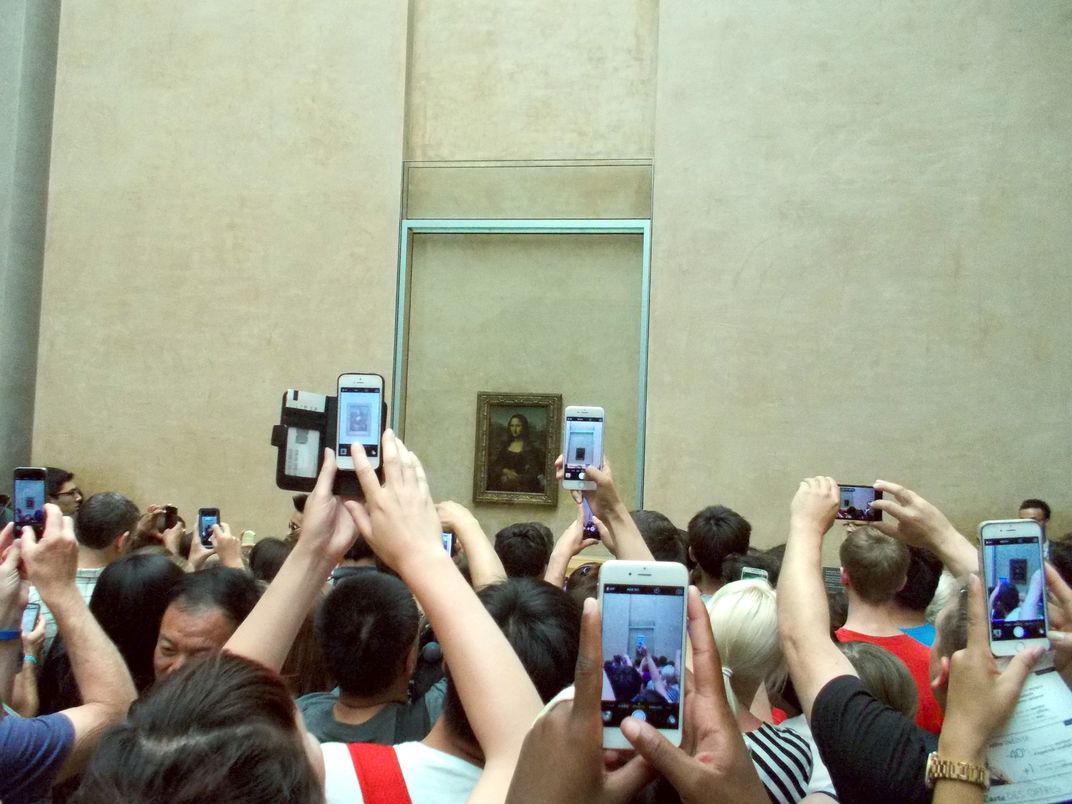This Saturday, Museums Across the Globe Are Asking Visitors to Linger for Slow Art Day
166 institutions are participating in the 10th-annual event, which encourages visitors to spend 5 to 10 minutes in front of a single work of art
/https://tf-cmsv2-smithsonianmag-media.s3.amazonaws.com/filer/a3/c3/a3c36a4b-b8a3-4da2-8def-0c364e00cff1/yayoi-kusama-2676153_1280.jpg)
Studies suggest the average amount of time a museum visitor spends engaging with any given work of art is brief—around just 27.2 seconds. And yes, that’s accounting for any selfies taken with the paintings and sculptures on view.
That’s why 166 museums across the globe are asking visitors to stay awhile this Saturday as part of the 10th annual Slow Art Day. According to the initiative’s website, the idea is to help people “discover for themselves the joy of looking at and loving art.”
During the event, participants stopping by institutions ranging from the National Portrait Gallery of Australia to the National Gallery of Ireland and the Art Institute of Chicago will be tasked with mindfully absorbing curated works for 5 to 10 minutes a piece. (Most venues have pre-selected five pieces, but some will narrow down the focus even more, or perhaps expand the list of options to accommodate a steady stream of visitors.) After observing each work, visitors are encouraged to engage in group discussions with curators and fellow participants.
“Many people don't know how to look at and love art and are disconnected from it,” Slow Art Day founder Phil Terry explains to BBC News’ Anna Bailey. “Visitors to galleries often see art from their iPads or mobile phones, and slow art is an antidote to that. By slowing down, it helps us to see art in a new way that energizes rather than demoralizes.”
Terry, an e-commerce entrepreneur, was once part of the population contributing to that limited viewing time. Then, in 2008, he found himself drawn in by Hans Hofmann’s “Fantasia,” on view at an exhibition hosted by the Jewish Museum in New York. According to ARTNews’ Trent Morse, before he knew it, Terry had spent an hour studying the work. Like any new evangelical to the cause, after leaving the show, he realized he wanted to share his experience with other art world neophytes. The following year, he officially launched Slow Art Day.
Since 2009, more than 1,500 Slow Art Day events have taken place across all seven continents, Sarah Cascone reports for artnet News. In 2017, Pomona College English professor Arden Reed even published a monograph, titled Slow Art: The Experience of Looking, Sacred Images to James Turrell, on the subject.
Speaking with The New York Times’ Stephanie Rosenbloom in 2014, James O. Pawelski, director of education at the University of Pennsylvania’s Positive Psychology Center, likened rushed visits to museums to the act of scanning the spines of library bookshelves and claiming to have read the entirety of all 100 volumes.
Most gallery visitors “see as much of art as you see spines on books,” Pawelski said. “You can’t really see a painting as you’re walking by it.”

Slow Art Day is far from the only initiative aimed at promoting more critical artistic contemplation. The Art Newspaper’s Hannah McGivern cites an array of related activities: The Museum of Modern Art, for example, hosts monthly “quiet mornings” during which guests can roam the galleries at their leisure before participating in guided meditation, while Tate Modern recently launched special “slow looking” tours of its Pierre Bonnard exhibition.
Even institutions that haven’t specifically introduced slow art events have taken steps to streamline visitor experience; Eike Schmidt, director of the Uffizi Gallery, tells McGivern that the Florence museum tactically reorganized its Botticelli and Leonardo galleries in order to make “people automatically disperse better.”
But some exhibitions—either intentionally or inadvertently—limit opportunities for slow looking. Yayoi Kusama’s Infinity Mirrors show is a good example, as Cascone observes: Visitors are restricted to spending just 20 to 30 seconds in each of her otherworldly “Infinity Mirror Rooms.” Meanwhile, masterpieces such as Leonardo da Vinci’s “Mona Lisa” or Vincent van Gogh’s “Starry Night” don’t put any formal barriers on looking, but individuals have a hard enough time catching a glimpse of the works over hordes of selfie-takers, let alone carving out time for a 10-minute cogitation session.
Still, if you have the chance to really sit with a work of art, whether it be a world-class canvas or simply a painting that catches your eye, the meditation could prove transformative.
Terry tells Artsy’s Isaac Kaplan that he still reflects on the 2008 visit that inspired Slow Art Day.“It totally shocked me how good it was and how much I saw,” he said. “I thought I could leap tall buildings I was so excited.”
/https://tf-cmsv2-smithsonianmag-media.s3.amazonaws.com/accounts/headshot/mellon.png)
/https://tf-cmsv2-smithsonianmag-media.s3.amazonaws.com/accounts/headshot/mellon.png)